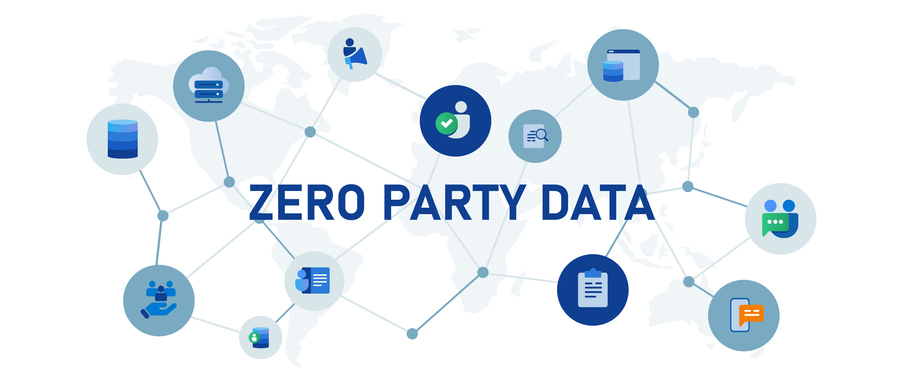From habits, preferences and decision making to budget and sense of humour, the customer is complex. Understanding them can make or break a business. For small businesses especially, nailing customer understanding is paramount; it’s what’s going to help you grow your business. Simply put, the more you understand your customer, the better the service you can offer them, and the happier they will be – happy customers endorse your brand and advocate your product or service which is the ultimate prize.
Although it’s vital, getting to know your customer can be daunting for a small business. Who are your customers? Are they really who we think they are? Is it just one group? What makes them tick? As a start-up ourselves, we understand the day-to-day pressures that get in the way of these open-ended, strategic reflections.
At SalesGossip, we love the Japanese proverb, ‘If you understand everything, you must be misinformed’. We are continually getting to know our users better and this process will never, and should never stop. We’ve had to dedicate time to it but the value is undeniable. Here’s how we get to know our customers…
- Establish what you need to know. Before you approach the mysterious realm of the customer, work out what you need to know about them. This is the first rule. The success of your business hinges on finding the common behaviours and attributes of your customers.
For us, age is not overly instructive. Whether the browser is looking to spend their pocket money or their pension, the concept of our site remains the same and equally useful. What our users buy, whether they buy online or in store, what products and brands they prefer and what trends they follow or respond to is far more interesting for us. Knowing this allows us to provide the information that they want and need, securing site returns and repeat users.
For any small business, having clear customer research objectives helps to navigate the often complex and contradictory territory of their world.
- Ask everyone. Presume nothing. Ask friends, family and colleagues about their habits, experiences and opinions. This is a free network of people to interrogate! Make notes as you go along – you know you’ll forget if you don’t.
As a start-up and a small business, we’re passionate about our business idea and we’ve found that because we’re open and enthusiastic about what we do, people like to talk to us about it and they like to feel that they’re helping. Any conversation is market research, whether you’re in the office, in a cab, at the supermarket checkout or at a dinner party.
Be constantly curious about the market, embrace its idiosyncrasies and you’ll build up a good understanding of the world where your customers live. However, don’t presume that your friends and family are reflective of the majority. Indeed, don’t presume that you yourself are always right. Don’t assume their or your world is the world. In other words, don’t stop there. It’s crucial to challenge expectations; be prepared to be surprised by your customer’s profile and behaviour.
- Ask your customers. So you’ve asked anyone and everyone you meet, now it’s time to talk to the customers themselves. This doesn’t have to break the bank. There are lots of simple, free online surveys. If you’ve got an existing customer database, these are a great option.
We’ve used it in the past but we’ve recently built our own online survey capabilities; we have some pretty techy people. This works well for us because we can brand the surveys and correlate individual responses with existing member information to make our offers even more personalised. We’re lucky we have a pretty big ready-made database to play with.
Surveys aren’t the only option. If you’ve been building a base of Twitter or Facebook followers, you can even use these channels for quick vox pops. If you don’t have a huge customer base or social media following, don’t panic. You can also telephone a small selection of your customers and have a conversation with them. You’ll find the common themes, and the information will be just as useful for you. And for your business, a personal approach with phone calls and emails might be more appropriate. You might be surprised at how many people are happy to give feedback when asked in a human, natural way.
- Reality check. Sometimes, people tell you what they think you want to hear. Comparing their responses with actual activity will give you a more accurate picture. Simple, easy-to-use programmes like Google Analytics can be invaluable, particularly for web-based businesses like us.
We can place customer survey responses next to activity such as site visitors or click-throughs to retailers’ online sites. We can analyse what users are typing into our search bar and what search terms are bringing them to our website. It’s a great way to see if customers are aware and honest about their behaviour in different environments, online and on the high street. In short, actions speak louder than words. Be creative and reflective with the information that you can obtain; pool information, compare fact and opinion and it might tell you something you didn’t know!
- Reassess – is your customer the same as your target market? Your customers have many faces; almost certainly they’re not limited to your ‘target audience’. Yes, it is important to have a target audience in mind but don’t over-compartmentalise. Men, women, children, students, mums, dads, professionals; all cross over, share ideas and recommend products and services. Your customers are likely to be a diverse combination.
As a company we didn’t anticipate the influx of sale-browsing men to our service. But in fact our service is enjoyed by almost anyone searching out a bargain. We may have envisaged a certain demographic but our site is open and friendly to whoever might stumble upon us. An exclusive customer profile might sometimes be appropriate. However, in the majority of cases, a narrow approach can only narrow your profit margin.
Getting to know our customers is one of the most interesting and exciting parts of our day, we learn so much as we do it. We’ve focused on our users in this article but as with many businesses, we have a two-sided network of customers. In our case, we have our users – the shoppers, and our clients – the retailers. It’s a cliché but knowledge really is power. The insights we hold about our users are the key to our relationships with our clients and ultimately the key to growing our business.





